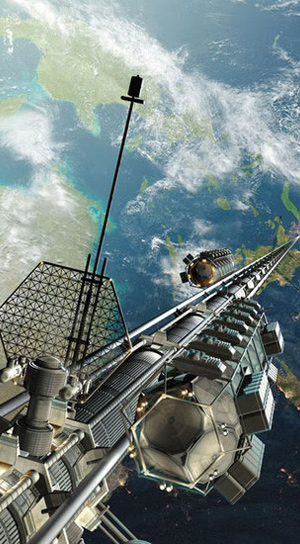Builder holds door open for chance of lift to space
 A Japanese building firm says it wants to smash the tallest building record with one of the most ambitious projects in history.
A Japanese building firm says it wants to smash the tallest building record with one of the most ambitious projects in history.
Construction giant Obayashi says it wants to build an elevator a staggering 96,000 kilometres tall.
It would reach through the atmosphere and into space, offering a new way to leave the planet without the hassle of breaking orbit.
An elevator into space would revolutionise travel and transform global economies, Obayashi says, and it wants to have its efforts running by the year 2050.
While it sounds like a total fantasy, developments in carbon nanotubes and other materials make the project technically very possible.
“The tensile strength is almost a hundred times stronger than steel cable... so it's possible,” Mr Yoji Ishikawa, a research and development manager at Obayashi, has told the ABC.
“Right now we can't make the cable long enough.
“We can only make 3 centimetre long nanotubes but we need much more... we think by 2030 we'll be able to do it.”
There are many uses for an elevator into space – launching small rockets, easily visiting the Moon or simply as the high tourist viewing tower ever.
The push for a space elevator captivates universities all over Japan, which hold annual competitions to share and learn from research across the country.
Different teams work on robotic cars, magnetic motors, pressure systems and other engineering challenges.
An international study in 2012 came to the conclusion that the space elevator would only happen through international co-operation.
“I don't think one company can make it, we'll need an international organisation to make this big project,” Mr Ishikawa said.
Some of the benefits are already clear. Right now, the fuel for leaving the atmosphere on a space shuttle costs about $22,000 per kilogram of cargo. Estimates say this would cost about $200 on a space elevator.
Online news outlets have already rated the space elevator as ‘unlikely’, based on an assessment of the technical risks.







 Print
Print